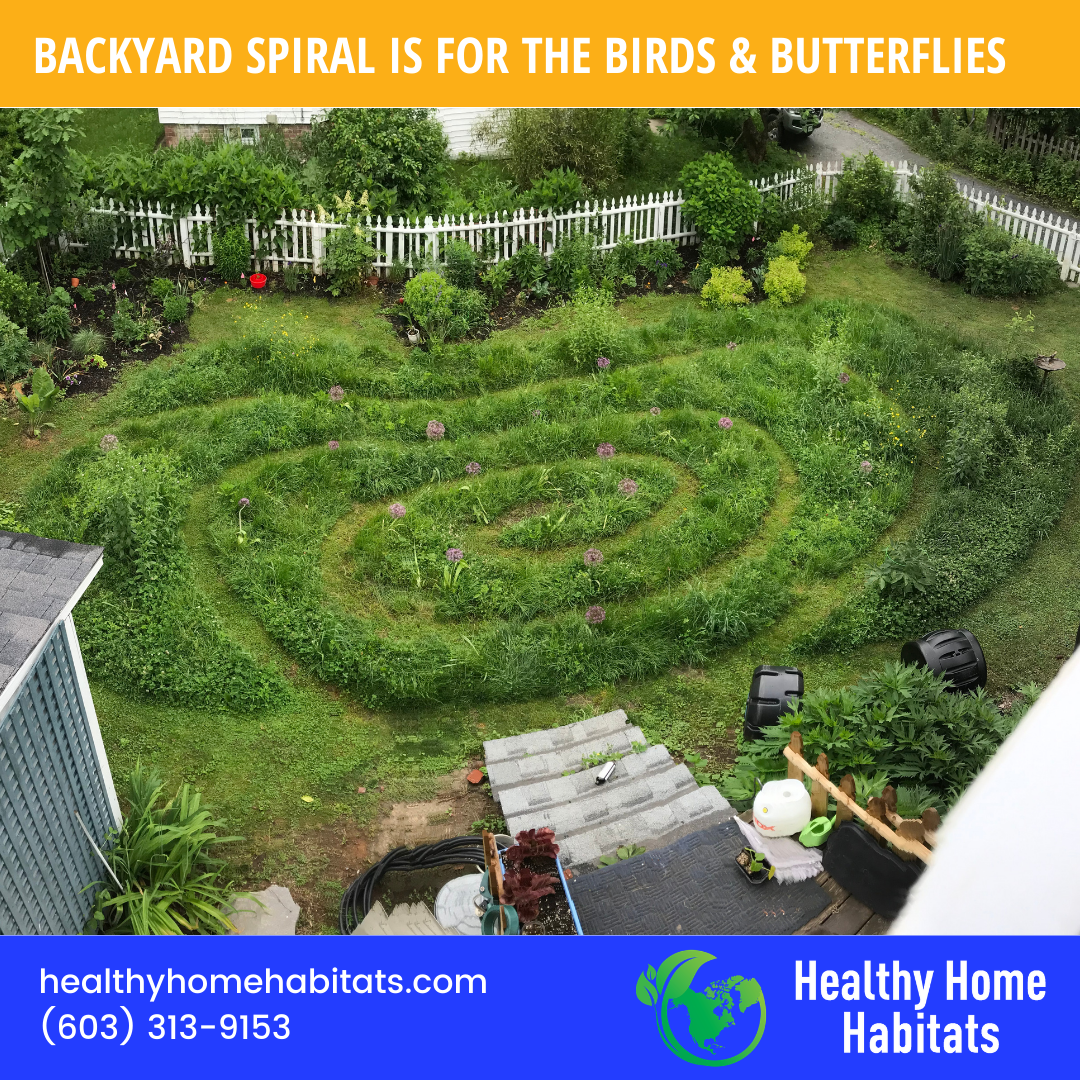This lawn spiral is just one experimental way to inspire homeowners to mow less, leave areas of unmown, more diverse plants in their yard. It’s a fun way to gain these five benefits!;
#1 You’ll help the bees. “A study by the USDA Forest Service found that cutting the grass every two weeks resulted in significantly higher bee abundance. Less frequent mowing gives lawn flowers like dandelions and clover – this is where social pressure comes to bear – a little more time to grow and blossom, resulting in nourishment for bees.” “The research team found that while mowing every 3 weeks resulted in as much as 2.5 times more lawn flowers (aka dandelions and clover) and greater diversity of bee species, the abundance of bees was greatest when lawns were mowed every 2 weeks. Further, the researchers documented 93 species of bees with supplemental observations reaching 111 bee species. This represents roughly a quarter of bee species recorded in Massachusetts.”
#2 You’ll save water & money. “In the US, 30 percent of water consumed on the East Coast waters lawns.” An important consideration as our droughts in the Northeast become more frequent and water becomes more expensive.
#3 You’ll need/use less chemicals. “Close to 70 million pounds of pesticides (including herbicides) are applied to US lawns each year. This is approximately ten times the amount applied to American farmland, acre for acre.” Just one problem from this is the “60-70 million birds (that) die from pesticide poisoning each year in the US alone.”
#4 You’ll be helping wildlife. Increased plant diversity allows for more of the insect caterpillars that birds need to feed their babies. Simply letting your lawn grow provides for a greater variety of which are important for many animals including insects and birds.
#5 You’ll save time. “Americans with an average yard size of 0.15 acres will spend anywhere from seven to 48 days of their life cutting the grass.” Aren’t there other things you would rather be doing with your time?
Now I’m a fan of the “two-fer” strategy. You know, having multiple benefits from a single action? This experiment is a unique “fiver-fer”, a success in my book. What has worked for you?
RESOURCES:
https://www.nrs.fs.fed.us/pubs/55816
https://www.nrs.fs.fed.us/urban/landscape_change/bee-habitat/
https://www.usda.gov/media/blog/2018/06/20/want-help-bees-take-break-lawn-mowing

